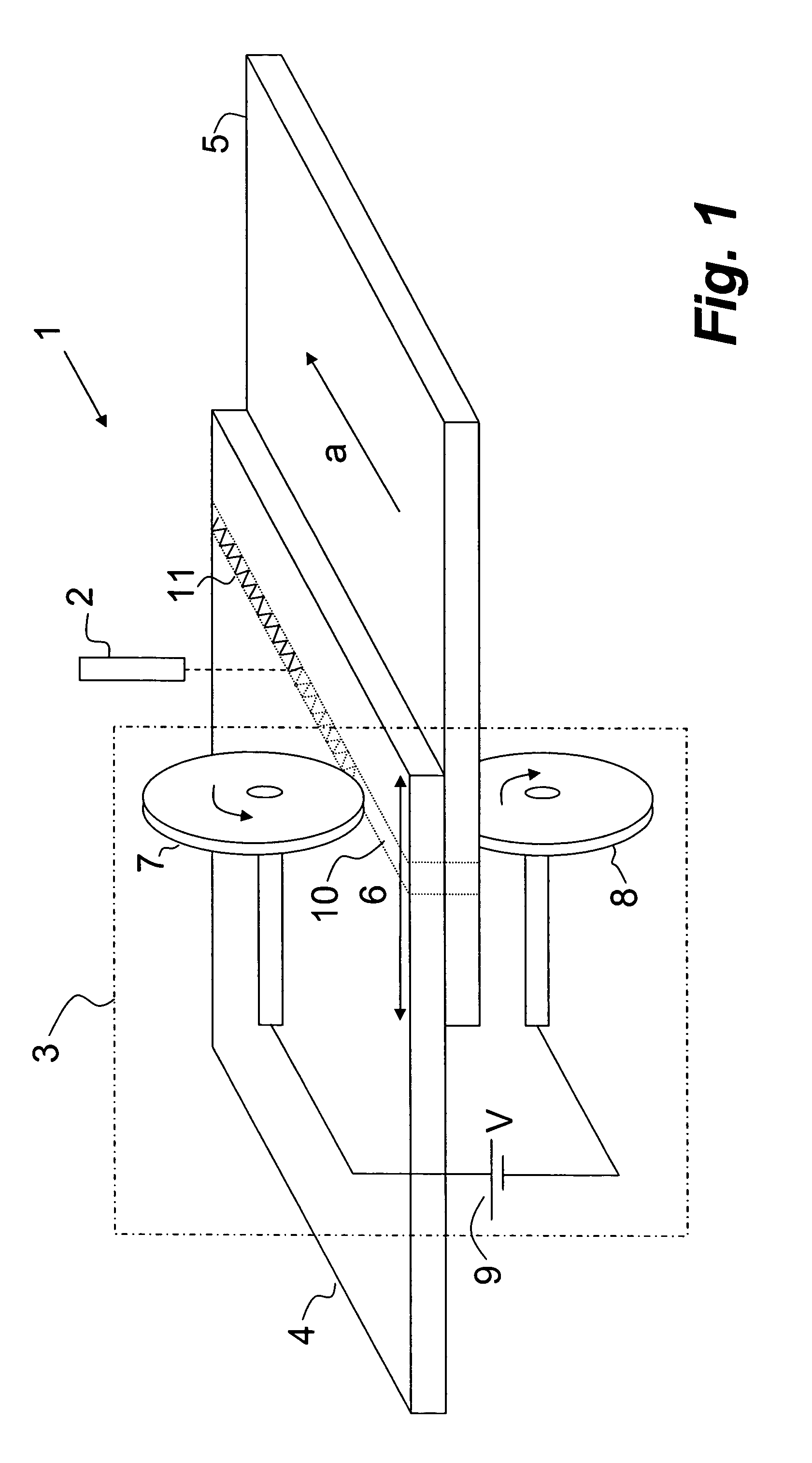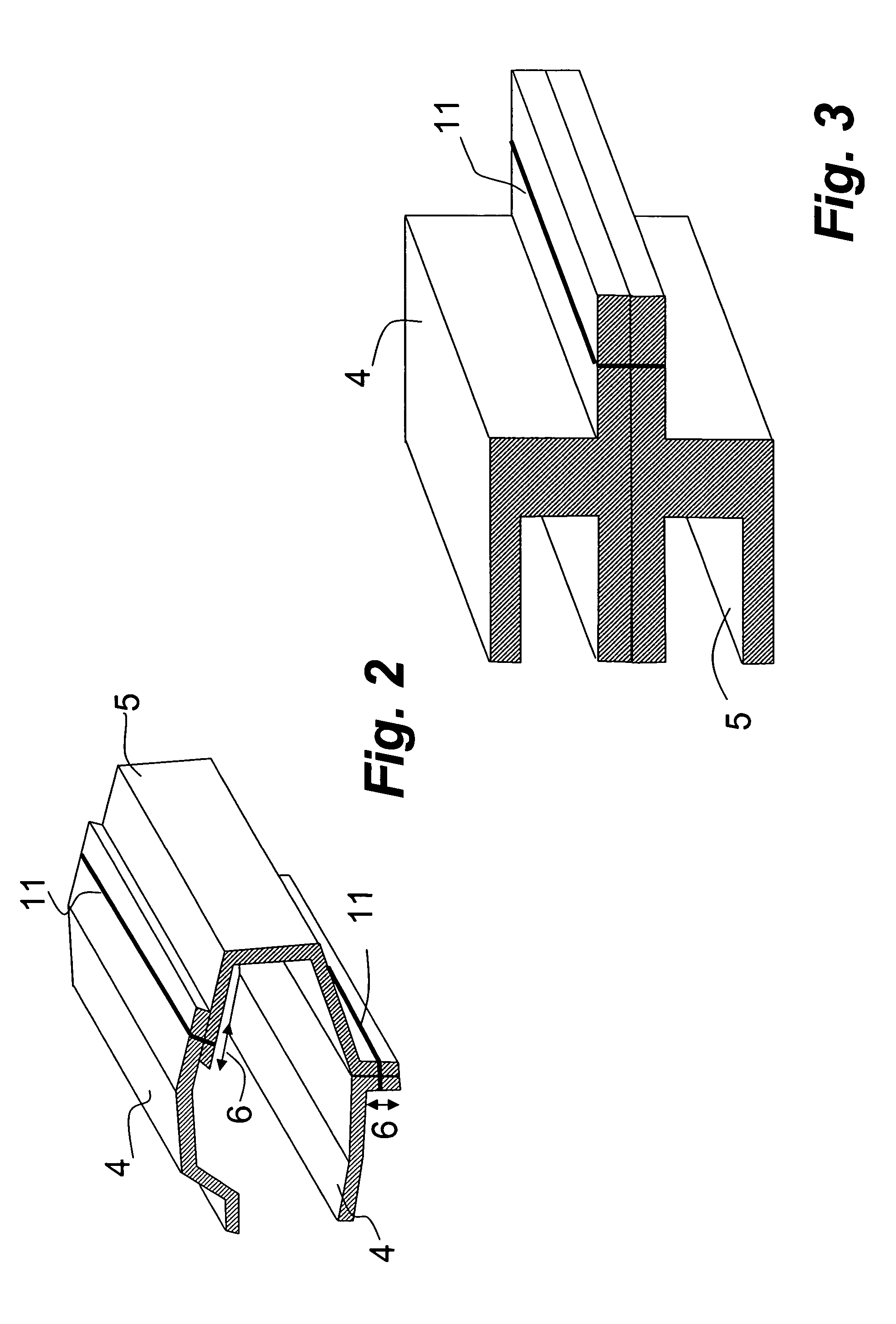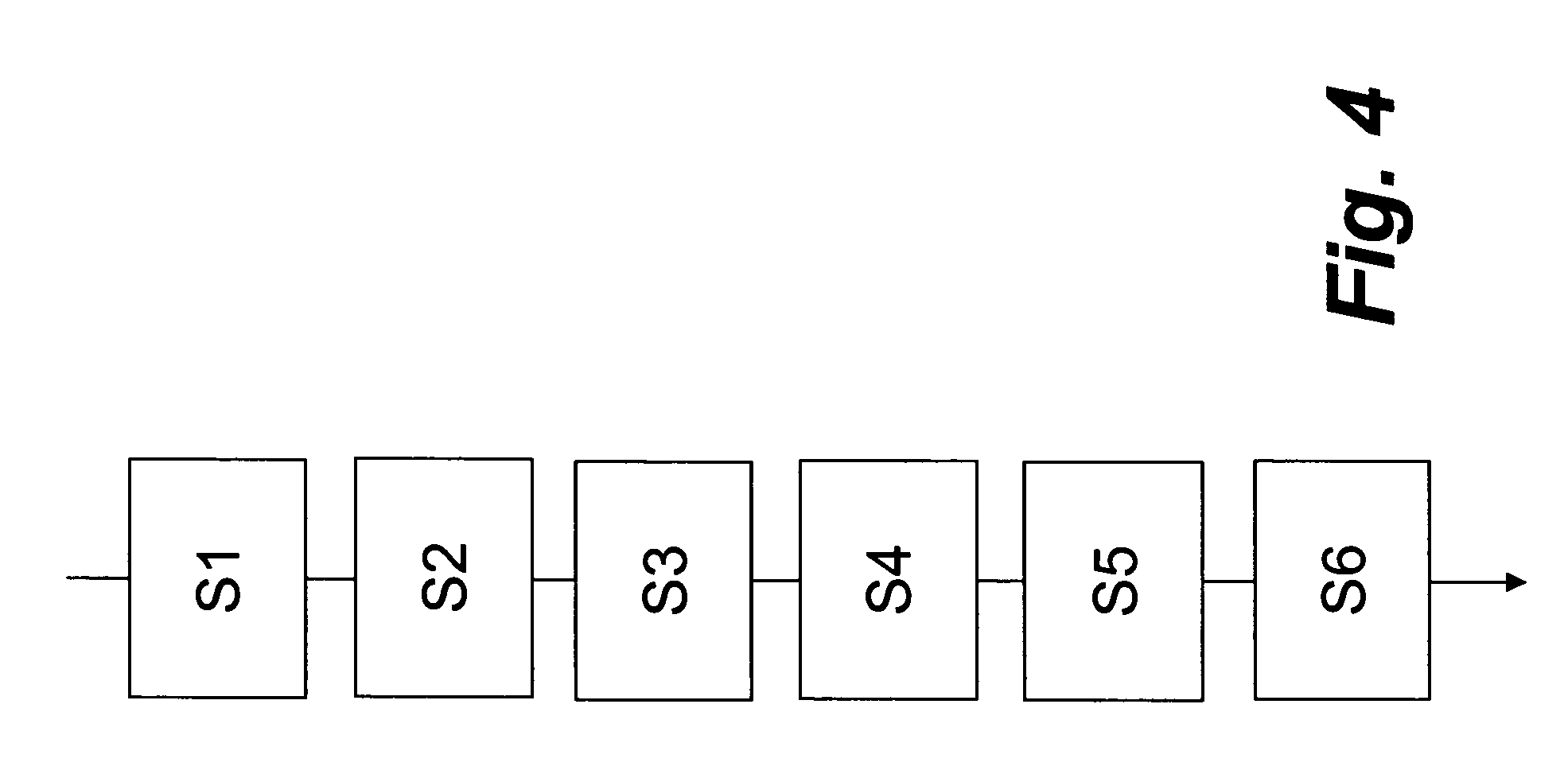Manufacturing method for joining multiple parts
a manufacturing method and technology for multiple parts, applied in the field of manufacturing methods for joining multiple parts, can solve the problems of difficult to achieve sufficient clamping, difficulty in welded connection, and increased difficulty in laser welding, so as to facilitate assembly and increase the usability of inventive arrangement
- Summary
- Abstract
- Description
- Claims
- Application Information
AI Technical Summary
Benefits of technology
Problems solved by technology
Method used
Image
Examples
Embodiment Construction
[0024] A first preferred embodiment of this invention will hereinafter be described with reference to FIG. 1. As disclosed in FIG. 1, a welding assembly 1 to be used for performing the inventive method, essentially comprises a resistance seam welding unit 3 and a laser welding unit 2, which may be integrated into a single welding unit, if desired.
[0025] The welding assembly 1 is generally to be used to interconnect at least a first and a second body part 4, 5, each body part being formed of an electrically conducting material, such as a steel sheet material, for instance DP600 steel, mild steel, DP steel or Boron alloy steel. The steel sheet material may be stamped, extruded or casted. The first and second body part 4, 5 may be made of the same material or by different materials. An example of a typical material to be welded with the present method is a coated or uncoated steel sheet material having a thickness of about 0.5-3.0 mm. The resistance seam welding unit 3 is first arrang...
PUM
| Property | Measurement | Unit |
|---|---|---|
| power | aaaaa | aaaaa |
| resistance | aaaaa | aaaaa |
| width | aaaaa | aaaaa |
Abstract
Description
Claims
Application Information
 Login to View More
Login to View More - R&D
- Intellectual Property
- Life Sciences
- Materials
- Tech Scout
- Unparalleled Data Quality
- Higher Quality Content
- 60% Fewer Hallucinations
Browse by: Latest US Patents, China's latest patents, Technical Efficacy Thesaurus, Application Domain, Technology Topic, Popular Technical Reports.
© 2025 PatSnap. All rights reserved.Legal|Privacy policy|Modern Slavery Act Transparency Statement|Sitemap|About US| Contact US: help@patsnap.com



